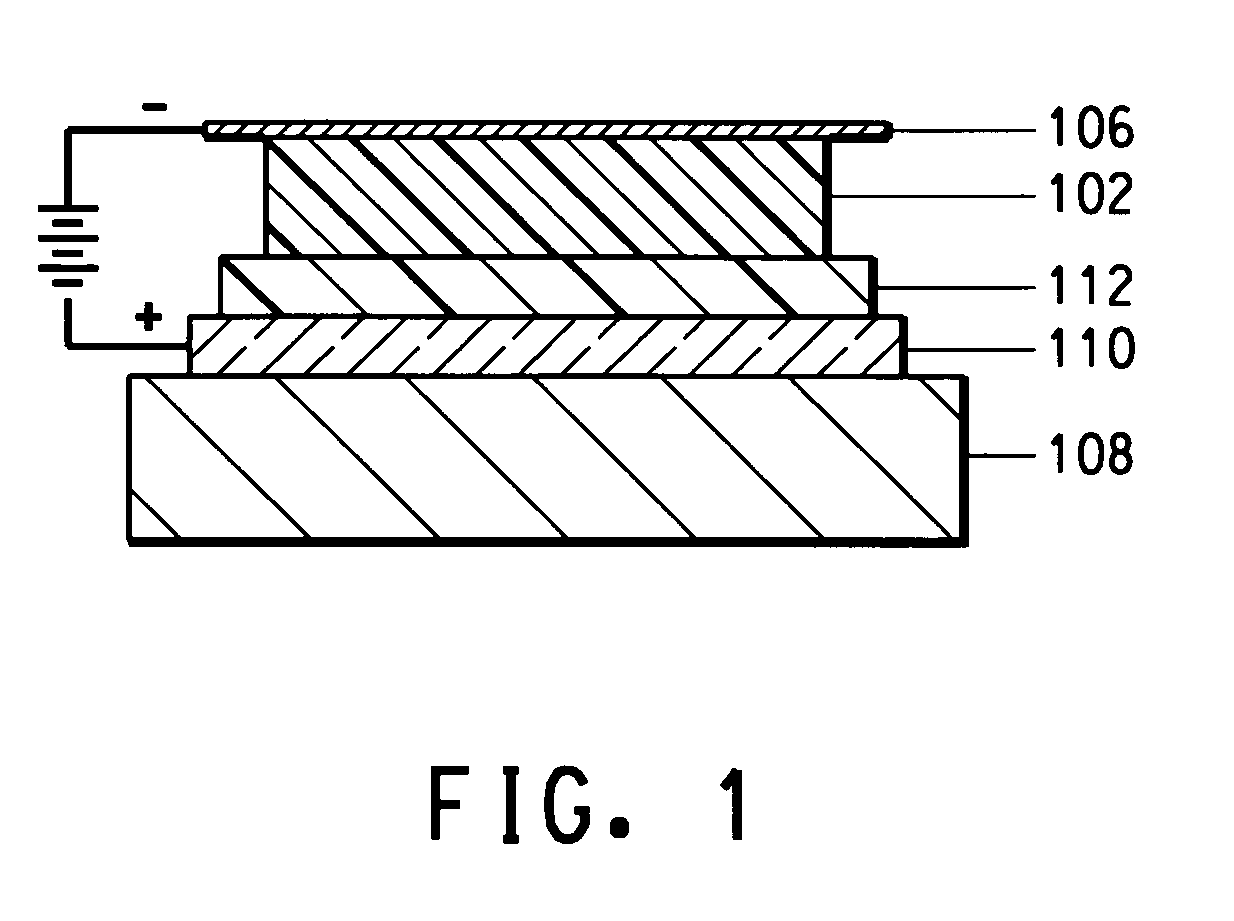Thermal treatment of solution-processed organic electroactive layer in organic electronic device
a technology of electroactive layer and organic electroactive layer, which is applied in the direction of sustainable manufacturing/processing, final product manufacturing, natural mineral layered products, etc., can solve the problems of insufficient resolution, uneconomical use of traditional transistors, and inability to meet the requirements of use, so as to improve the life time and/or performance
- Summary
- Abstract
- Description
- Claims
- Application Information
AI Technical Summary
Benefits of technology
Problems solved by technology
Method used
Image
Examples
example 1
[0153] PANI(ES) powder was prepared according to the following reference (Y. Cao, et al, Polymer, 30(1989) 2307). The emeraldine salt (ES) form was verified by the typical green color. HC 1 in this reference was replaced by poly(2-acrylamido-2-methyl-1-propanesulfonic acid (PAAMPSA) (Aldrich). First, 30.5 g (0.022 mole) of 15% PAAMPSA in water (Aldrich) was diluted to 2.3% by adding 170 ml water. While stirring, 2.2 g (0.022M) aniline was added into the PAAMPSA solution. Then, 2.01 g (0.0088M) of ammonium persulfate in 10 ml water was added slowly into the aniline / PAAMPSA solution under vigorous stirring. The reaction mixture was stirred for 24 hours at room temperature. To precipitate the product, PANI(ES), 1000 ml of acetone was added to the reaction mixture. Most of the acetone / water was decanted and then the PANI(ES)-PAAMPSA precipitate was filtered. The resulting gum-like product was washed several times with acetone and dried at 40° C. under dynamic vacuum for 24 hours.
[0154]...
example 2
[0155] Solution / Dispersion 200 of Table 1 above was prepared.
[0156] Four grams (4.0 g) of the PANI(ES) powder as prepared in Example 1 was mixed with 400 g of deionized water in a plastic bottle. The mixture was rotated at room temperature for 48 hours. The solution dispersion was then filtered through a lam polypropylene filter. Different concentrations of PANI(ES) in water were routinely prepared by changing the quantity of PANI(ES) mixed into the water.
[0157] This Example demonstrates that PANI(ES) can be dissolved / dispersed in water and subsequently filtered through a 1 μm filter.
example 3
[0158] Four grams (4.0 g) of polyacrylamide (PAM) (M.W. 5,000,000-6,000,000, Polysciences) was mixed with 400 ml of deionized water in a plastic bottle. The mixture was rotated at room temperature for at least 48 hours. The solution / dispersion was then filtered through a 1 μm polypropylene filter. Different concentrations of PAM were routinely prepared by changing the quantity of PAM dissolved.
[0159] This Example demonstrates that PAM can be dissolved / dispersed in water and subsequently filtered through a 1 μm filter.
PUM
| Property | Measurement | Unit |
|---|---|---|
| conductivity | aaaaa | aaaaa |
| temperature | aaaaa | aaaaa |
| temperature | aaaaa | aaaaa |
Abstract
Description
Claims
Application Information
 Login to View More
Login to View More - R&D
- Intellectual Property
- Life Sciences
- Materials
- Tech Scout
- Unparalleled Data Quality
- Higher Quality Content
- 60% Fewer Hallucinations
Browse by: Latest US Patents, China's latest patents, Technical Efficacy Thesaurus, Application Domain, Technology Topic, Popular Technical Reports.
© 2025 PatSnap. All rights reserved.Legal|Privacy policy|Modern Slavery Act Transparency Statement|Sitemap|About US| Contact US: help@patsnap.com



